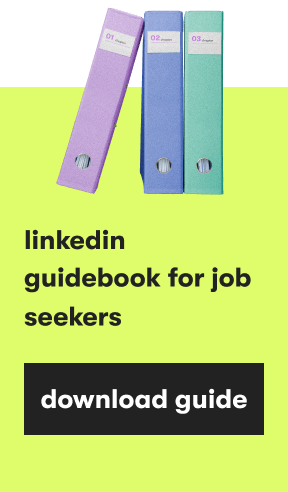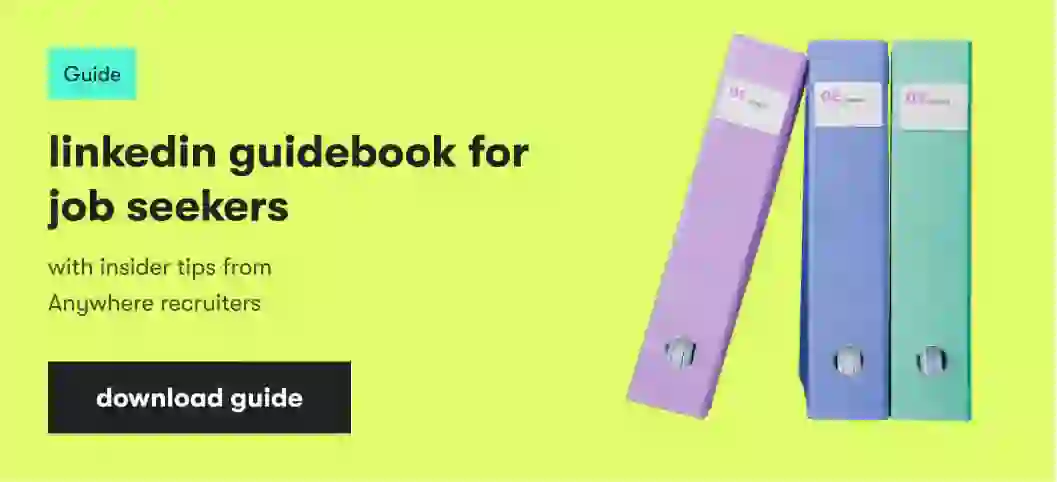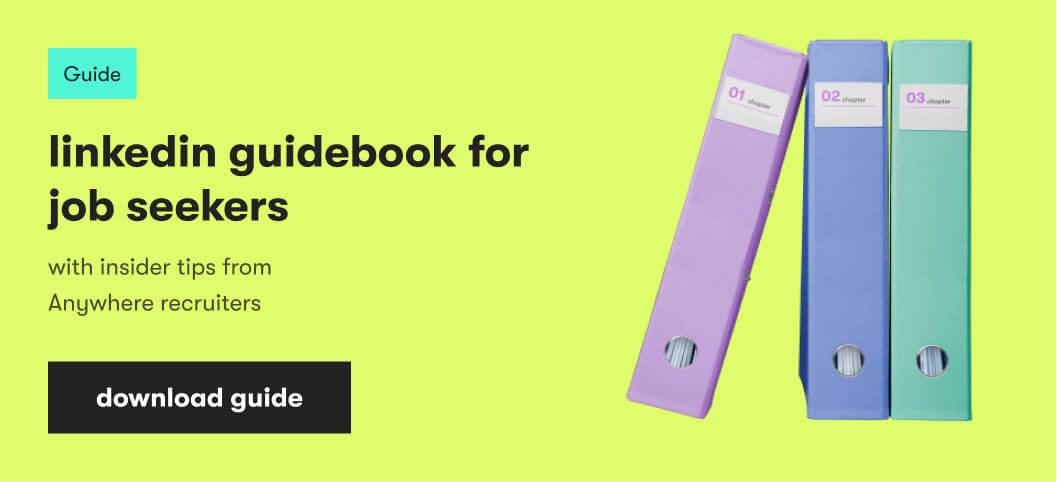When you’re seeking new software engineering opportunities, leveraging LinkedIn is essential. Recruiters and hiring managers frequently search LinkedIn for software engineers, hoping to connect with some of the 24.3 million professionals working in the software development field. This makes it an excellent platform for discovering opportunities.
LinkedIn also allows you to share far more information than will fit on a traditional position application, which is often beneficial. Plus, in some cases, you can submit your profile to open tech jobs in lieu of a standard resume, which can make LinkedIn a timesaver.
As with any job search or career-oriented platform, you need to use LinkedIn correctly to get results. Below is our quick guide to LinkedIn for software engineers, including LinkedIn profile tips for job seekers, techniques for connecting with recruiters, and more.
How to use LinkedIn to land your job as a software engineer
One of the main reasons that software engineers need a LinkedIn profile is that you can search for open positions and apply to them directly from the platform. There are several search mechanisms available, giving you the ability to choose the approach that works best for you:
- Search proactively. When it comes to using LinkedIn, the simplest way for software engineers seeking out new opportunities to begin is to use the search field that sits at the top of the homepage. This allows you to look for postings based on the keywords that you supply.
- Head to the Jobs page. There, you can enter a keyword and set your location as a starting point. Then, you can filter the results by company, experience level, posting date, and more. You can easily drill down into your results, leading to stronger matches.
- Reach out to hiring managers, companies, and recruiters directly. You can search for a tech recruiter that serves your physical area, for example, and then contact that recruiter on LinkedIn using LinkedIn InMail or by sending an invitation to connect.
While contacting a recruiter may feel bold, it’s critical to remember that recruiters are in the business of finding candidates. As long as you identify professionals specifically seeking software engineers or similar tech professionals, and approach them politely and professionally, they’ll likely be happy to discuss opportunities.
Finally, having a well-developed, keyword-rich and otherwise enticing LinkedIn profile can bring recruiters and hiring managers to you. Make sure your content is comprehensive, and showcases your skills and achievements.
The first thing to do is to keep your profile 100% updated. This is important because the profile is something that recruiters check before considering a candidate. Second, I believe that having a big network will help you find more options. Also, create job alerts with the specific requirements of your search. Finally, follow the companies you’d like to work for so that you will get updates, especially when they open a job position.

It’s also wise to let recruiters know that you’re open to work using the #OpenToWork feature. You can set it to display to all members, or just to recruiters, so choose the option that gives you the right amount of privacy for your situation.
Break the ice with recruiters
As mentioned above, cold-messaging recruiters is an excellent way to connect with professionals who can help you find new opportunities. You need to break the ice correctly, however, ensuring that you make a positive first impression and, ultimately, get the job search support you’re after.
Connecting with recruiters is kind of crucial for me whenever I receive a job opportunity and I'm interested in it. If the recruiter accepts the invitation, that gives me a boost of confidence, since I consider the process serious.

You have several options for connecting with recruiters on LinkedIn. Some recruiters list their email addresses under the “Contact Info” section of their profiles. Others rely on built-in messaging services, such as LinkedIn InMail.
Regardless of the option you use, you need to craft a message that highlights the best of what you have to offer, while maintaining the right tone. Pushiness or demands aren’t typically well-received, so avoid anything that may come across as aggressive.
Instead, keep the tone professional but light, seizing opportunities to let your enthusiasm shine through or showcase you as a friendly authority on all things software engineering.
Begin by greeting the recruiter by name, then introduce yourself by providing your name and current job title. Follow that by explicitly stating that you’re looking for new software engineering opportunities, and highlight two or three recent achievements that showcase your skills and experience. Then, let them know that you’d love to discuss any positions they're looking to fill, and invite them to reach out. Finally, thank them for their time and consideration before signing off.
I believe connecting with recruiters is a good idea. Doing so can help you establish a relationship with the people involved in the process, and get more details about the role and the company. You may also have the chance to talk about their personal experience and their opinion of the company. This can help you understand if you are a good match, and if it’s the company you are looking for, right from the start.

In most cases, you want your initial messages to be just two or three short paragraphs. Anything more could be overwhelming. Ultimately, your goal is to establish an initial relationship, so feel free to hold back some details until the recruiter responds.
Level up your software engineer LinkedIn profile
When you’re creating or updating a software engineer LinkedIn profile, finding ways to stand out from the crowd is a must. Spend time optimizing your LinkedIn profile, ensuring that it strikes the right notes and includes the information likely to catch the eye of recruiters and hiring managers.
My top tips for optimizing a LinkedIn profile are: describe in detail your work experience; list related skills; follow people with the same interests and experience; and make at least one post a month to draw traffic to your profile.

Often, small adjustments can make a significant difference. Here are some simple ways to level up your software engineer LinkedIn profile.
Rethink your software developer LinkedIn summary
Your software developer LinkedIn summary is the most important part of your entire profile. It functions like an elevator pitch; allowing you to share more than you can fit into a headline, and encouraging recruiters or hiring managers to take a closer look at your profile.
Generally, you want to keep the content focused and concise, but not to the point of being sparse. LinkedIn allows you to use more than 2,000 characters, which is quite a bit of space. However, it truncates the content for viewers, leaving you about three lines of text to really catch someone’s eye.
Your goal, then, is to showcase your most desirable skills, and some insights into your personality, in just two to four keyword-rich sentences. That makes this section enticing, helps you show up in software engineering candidate search results, and increases the odds that recruiters will reach out to you.
Once you have that initial paragraph, you can add a few more details if you like, using a cover letter-style approach. Just make sure that you check to see how the content displays, including where it gets cut off when truncated. You can also keep things concise and stick with the single-paragraph approach.
To help make the above points clearer, here is the concise approach on display in this web developer LinkedIn summary example:
A web developer with experience in JavaScript, HTML, CSS, SQL, and Java, I pride myself on creating effective, clean code from the beginning. Troubleshooting and testing are always part of the equation for me, allowing me to deliver exceptional results every time.
This approach features critical keywords, and it’s punchy and focused. Plus, it can either serve as a strong opening for more content, or stand on its own to keep the profile brief and concentrated.
Zoom in on your software engineer LinkedIn background photo
When developing a software engineer LinkedIn profile, it’s common to focus on your headshot when choosing images. You also need the right background photo (also referred to as a banner), though, to make your profile more appealing.
A LinkedIn background photo for a software engineer isn’t just about the image you use, it’s more about the overall aesthetic quality. You want to use a similar palette to your headshot, without causing the two images to blend together. Having a high-quality image that doesn’t look pixelated is also critical, since a grainy background photo seems unprofessional.
When it comes to the image itself, it’s wise to choose something that aligns with who you are as a professional. Software engineers may want a monochromatic shot of a keyboard on a clean desk, opting for an image that uses a color palette complementary to the one used in their headshot.
Grow your network
To maximize the value of LinkedIn for software engineers, growing your network is essential. Gathering new connections increases your reach and visibility, both of which work in your favor. Plus, being active across the platform can create opportunities to showcase your expertise, further enhancing your visibility, and highlighting your passion for the field.
Start by adding people that you feel are aligned with what you do, and people that work for companies you admire. You also have to be active on this platform so that you stay visible to the people you have connected with.

Ultimately, a significant part of your career success is based on the connections that you make along the way. By curating a network of professionals who work at a wide array of companies, you may have an easier time securing referrals to competitive jobs. You might also have a better chance of securing an interview by being specifically recommended by a person that the recruiter or hiring manager knows.
In most cases, participation on the platform is the best way to increase your network online. Engage with others’ posts, join LinkedIn Groups that focus on your area of expertise, create your own content, and invite comments. Additionally, respond to people who reply to you or post comments on your content, to start a dialog.
Another excellent option is to ask people to connect with you on LinkedIn when you meet in person. You can boost those relationships to strengthen the connection. Then, if they have a contact you’d like to know, you can ask for an introduction.
If you’re wondering whether you should connect with your interviewer on LinkedIn, you can — but it’s critical to time the request correctly. Generally, you don’t want to ask them to join your network until after a hiring decision is made. Any earlier than that can seem inappropriate unless you agreed to discuss any open questions after the interview, so don’t extend that invitation until you know whether you’ve secured the position.
Manage your LinkedIn profile visibility
When you’re creating or updating your software engineer LinkedIn profile, you have the ability to control how visible it is, including the option to hide your profile from public view.
Rather than hiding the profile entirely, you have the ability to curate what’s in your public view, at least to a degree. You can limit access to your email address, and control whether your last name is viewable, and whether your profile is discoverable by certain apps or partner services. You can also choose to allow only recruiters to see your profile, rather than everyone on the platform.
There are situations in which you may need to know how to hide a LinkedIn profile, as well. If you want to privately browse LinkedIn without letting others know that you visited, you can do that – making it easier to discreetly learn more about recruiters or companies. To learn how to make LinkedIn private for this purpose, head to “Settings & Privacy,” go to “How others see your LinkedIn Activity,” click “Change,” and choose “Private Mode.”
If you need to fully hide your LinkedIn profile, that option is available as well. While it isn’t ideal to do this if you’re networking or seeking out opportunities, it could be essential if someone is using the platform to contact you in an inappropriate way. If you need to do this, head to “Settings & Privacy,” choose “Visibility,” go to “Profile viewing options,” and select “Private mode.”
LinkedIn as your software engineering career booster
Ultimately, this guide to LinkedIn for software engineers can help anyone in the field find new opportunities and connect with others more easily. Make sure to develop a standout profile, update your background image, hone your LinkedIn summary, and choose the right profile visibility settings based on your needs. That way, you can remain in control, while making it easier to take your software engineering career to the next level.

With a focus on remote lifestyle and career development, Gayane shares practical insight and career advice that informs and empowers tech talent to thrive in the world of remote work.
With a focus on remote lifestyle and career development, Gayane shares practical insight and career advice that informs and empowers tech talent to thrive in the world of remote work.
Explore our Editorial Policy to learn more about our standards for content creation.
read more


















